Otumfuo durbar - A lifetime feast
A grand durbar, which climaxed the 10th anniversary celebrations of the enstoolment of Otumfuo Osei Tutu II as the 16th occupant of the Golden Stool, turned out to be a great cultural feast for thousands from all parts of the world.
A significant aspect of the durbar was the exhibition of the wealth of the Asantehene and his state as shown in the regalia paraded in his procession to the durbar grounds.
The rich culture and heritage of traditional rulers of Asanteman and other parts of the country were in full glare as Otumfuo Osei Tutu II led his paramount, divisional and sub chiefs to celebrate the anniversary at the Baba Yara Stadium.
The durbar ground witnessed varieties of Kente cloths, an assortment of colourful state umbrellas of different shapes and sizes and other traditional costumes, which brought memories of yesteryears, when traditional costumes were the order of the day.
The main focus of the festival, Otumfuo Osei Tutu II was the centre of pomp and pageantry. The King sat in his palanquin from Asafo and danced his way unto the durbar grounds accompanied by long retinue of palace attendants depicting the various roles they play at the palace.
Otumfuo Osei Tutu was adorned in rich kente cloth with ornaments of gold on his hands and feet. The weight of the gold ornaments made it difficult for him to lift his hands to greet the dignitaries who had gathered at the stadium in his honour.
The Asantehemaa, Nana Afua Kobi Serwaa Ampem who is about 105years old arrived at the durbar grounds briefly, paid homage to her son and departed. She received great cheers for having given Asanteman a great King,
But many were those who were disappointed, as they could not see the real sacred Golden Stool, which represent the soul of Asanteman.
A replica Golden Stool was carried to the stadium and displayed on a special chair (Hwedom) made for it.
Again many foreigners who anticipated to see more drumming and dancing were disappointed as they could only do with speeches after the Asantehene had taken his seat.
Parents had to carry their children on their shoulders for them to have a clear view of the Asantehene and his wealth as he rode in a palanquin from Asafo to the stadium in the once-in-a-life-time experience event.
The Asantehene was led by the “samanka”, which consist of a brass pan borne by one of the Asantehene’s healers and diviners “Nsumankwafo” and in it were talismans and herbs said to posses the power to drive away evil spirits so as to pave the way for the King to approach.
The “nsumankwafo” carried “bodua” which is a flywhisk made of animal tail and treated with medicine to drive off evil spirits.
Following closely after the “samanka” was the “sika mpaboa”, sandals with gold studded straps. It depicted the power of the King as it symbolises the fact that the King’s feet must never touch the bare ground.
Then came the “nsafoa” bunches of steel, silver and gold keys, symbolising that all doors were shut and locked up in the palace whilst the Asantehene was out.
This was followed by “mentia” (elephant tusk short horns) made of “kokwangya” horns, which in literal sense are known as “never left behind”, because they are always on hand whenever the King turns out in state.
“Nkofe”, present when the King turns out in public and “ntahera” which together with the two preceding horns heralds and announce the arrival of the Asantehene. The last one, “nkontwema” reminds all of the need to keep to time or the importance of being punctual.
Following the horns were chairs, “krokowa”, footstool for the Asantehene when he sits in public, “banwoma” an elephant skin that serves as a carpet for the chair, “Hwedom” which the Golden Stool rests, “Hwedomtea”, a chair on which the Asantehene sits and which is placed on a leopard skin. It is decorated with silver and gold studs, the back of this chair is embossed with a circular design in silver, called “dwenie”.
“Asipim nnamu”, “mmaadwa”, “hwedom”, “kodeedwa” were all part of the chairs that were displayed last Sunday.
Then came the drums, “sika akua”, “sika sankuo”, “nkukuadwa”, “mpedi”, “nkrawire”, “etwie”, “prempe” and “kwantempomuta” all together comprising the Asantehene’s musical ensemble.
Next in the procession were the swords, “asomfena” – courier swords, “mfena” and “mfenatenefuo” – sword bearers.
Following the swords were the umbrellas, “boaman”, “oyokomaa”, “nyankonton” – rainbow, “akokobaatan”, “nankanini”, “mfoanfoa”, amd “prekese”.
“Dwete-kokuo”, a silver casket in which were placed odd requirements of the Asantehene as he goes out from the palace, such as gold dust he would need to make purchases or to give away as presents was also around.
“Nseniefo” court criers and carriers who follow the symbolic regalia wearing gold decorated caps and are responsible for the maintenance of quiet and order when the Asantehene sits in public and also used as couriers of messages were also there.
“Ekyemfoo” bearers of shields made of wicker and decorated with skins of colobus monkey and “taa-hyefuo” bearers of gold and silver decorated tobacco pipes were also in the procession.
Their presence in the procession signified that it was the wish of the people that their leader should live to an old age since pipes are smoked mostly by the aged.
Other regalia of the procession were “ekyem” (war shields), “adumfuo” and “abrafuo” (guards and executioners”, “kokosesefuo” (young men of the royal family with fans), “ahopraduo” (bearers of the King’s elephant tail whisks, “nkotokuwa” and “sanaa and fotuo” (bags made of elephant hide containing god weights –sanaa- and gold dust – fotuo”)/
Indeed, the durbar was a great cultural feast that also signified the unifying factor of the Asantehene bearing in mind the calibre of dignitaries from all over the world as well as Ghanaians from different ethnic groupings and political parties that were there.





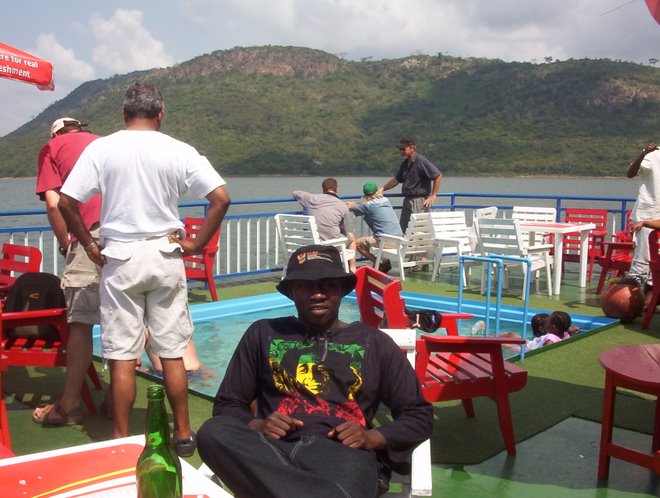









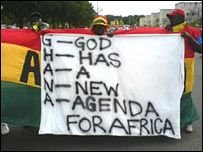









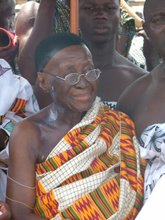
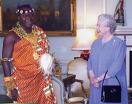



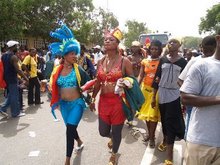
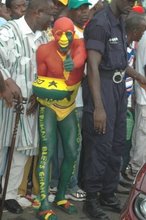
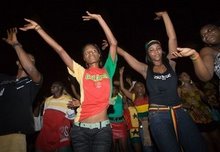
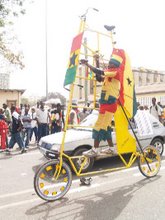
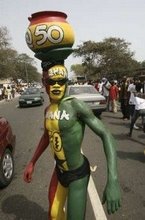



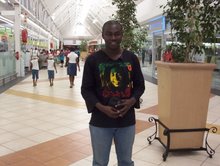
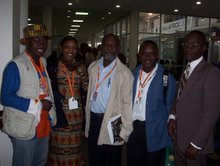
No comments:
Post a Comment